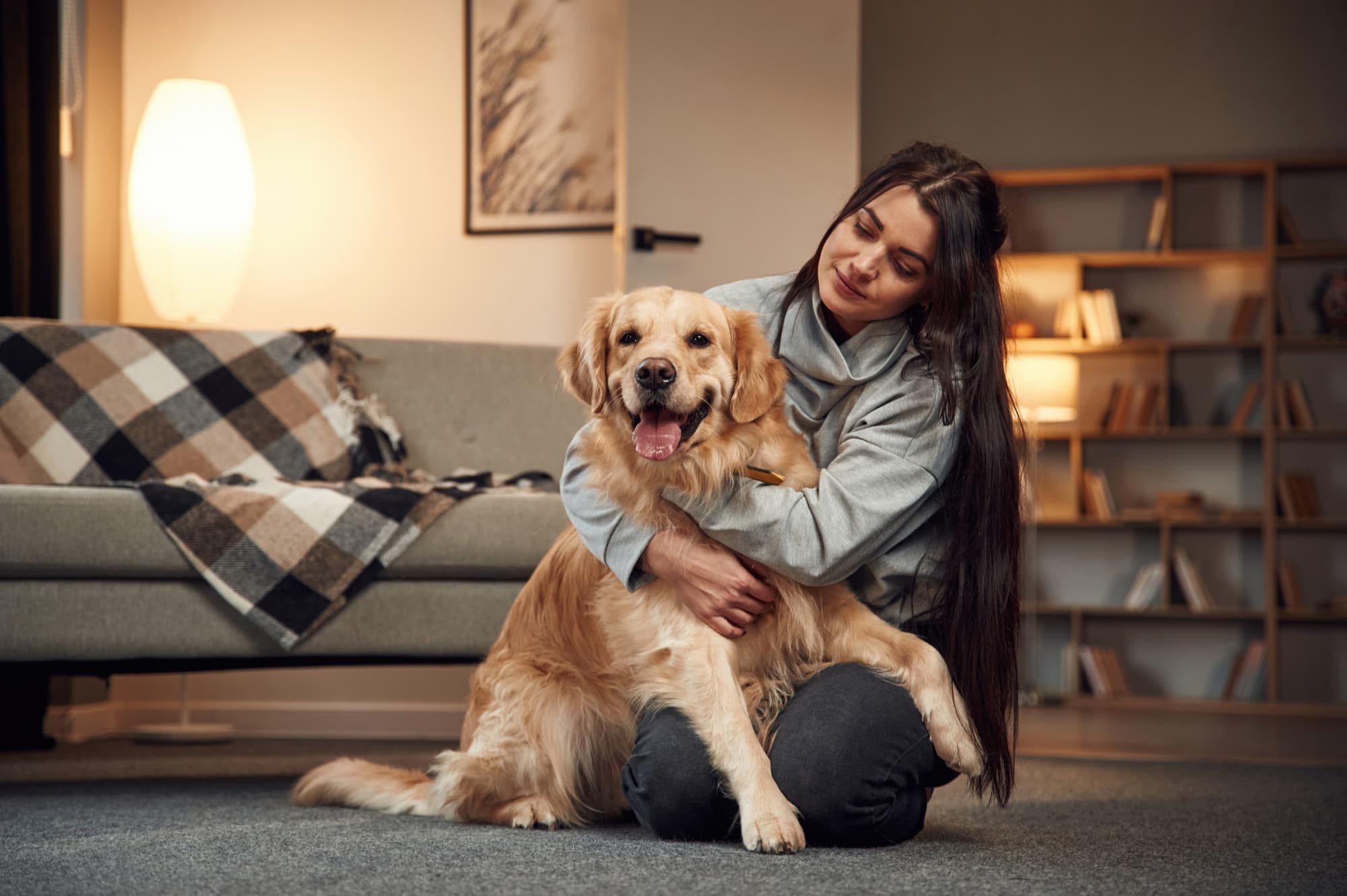Your dog can see more colors than you think, just in different shades than you. Dogs perceive color differently than humans, but their world is not limited to gray, black and white as once believed. Dogs have a different eye structure than humans, which limits their color range to certain colors, such as yellow and blue. Understanding a dog’s color range can help you choose toys and training objects they will be able to see the clearest.
What Is Colorblindness?
Colorblindness is the inability to see certain colors or differentiate between colors. It occurs due to an abnormality in the eye’s color-sensing receptors. People can experience one of two different color-blindness types. Red-green colorblindness inhibits the ability to differentiate between red and green and is the most common form of color-blindness. Blue-yellow colorblindness inhibits the ability to differentiate between blue and yellow.
Some of the first studies on colorblindness occurred in the late 18th century. English scientist John Dalton studied colorblindness when he noticed that he and his brother could not identify certain colors. They confused pink with blue and scarlet with green.
The eye consists of specialized receptors and cells known as cones and rods. Cones help differentiate between colors while rods detect motion and aid vision in various light levels. A human eye contains three types of cones, while a dog’s eye only contains two. Because of this, humans can identify the three color combinations of red, green and blue, while dogs can only identify blue and yellow, which means a dog’s color vision is dichromatic or “two-colored.”
Are Dogs Colorblind?
Dogs can see more colors than most people believe. Past research caused a widespread belief that dogs can only experience the world in black and white, but they can actually see some colors, too.
For decades, many people believed the myth that dogs are colorblind and can only see in black and white. This is most likely due to Will Judy’s 1937 manual, “Training the Dog.” In his manual, Will Judy wrote that dogs mostly see the world in various shades of gray and black. Judy was a dog-lover and publisher of Dog Week magazine, and he believed that dogs had poor vision. He hypothesized that dogs could only see general shapes and outlines and single tones and shades.
The hypothesis that dogs had poor vision had little backing, but over time people adopted the idea that a dog’s color range was limited to black and white. Over the last few decades, researchers examined the canine eye structure and found differences between dog and human eyes.
Dogs can see certain colors. Dogs see and experience colors differently than humans, and they have a more limited color perception than humans. Research has shown that dogs see their surroundings through a unique color spectrum.
What Colors Do Dogs See?
Dogs have yellow-blue dichromatic vision, which means their vision is similar to a human with red-green colorblindness. Dogs can easily distinguish between blue and yellow variations, but they cannot see green or red very well. Additionally, dogs cannot see the colors pink, purple or orange because they are shades of red and green. Blue and yellow are two colors dogs can see best. They see their surroundings in the following shades:
- Light blue
- Dark blue
- Light yellow
- Dark yellow
- Grayish yellow
- Brown
- Gray
- Grayish brown
- Black
- White
Dogs typically see violet, blue and blue-green as varying shades of blue, while they see green and red as shades of gray and brown. While we can see vibrant green grass, plants and trees, dogs see them as brown. Similarly, they probably see their bright red chew toy as brown.
How Do We Know What Colors Dogs See?
In 2013, Russian researchers conducted an experiment to see if dogs could distinguish between yellow and blue. They placed a different piece of paper on four different feed boxes. The four different pieces were light yellow, dark yellow, light blue and dark blue. Only the box with the dark yellow paper contained meat, and the dogs learned to associate that box with their food.
The researchers then placed only two colors on the boxes, one with light yellow and one with dark blue. They predicted that if the dogs only associated the food with the paper’s shade, they would choose the dark blue paper, but most of the dogs consistently chose the light yellow paper. This showed that the dogs could differentiate between the yellow and blue colors.
Do Dogs See in the Dark?
Researchers found that function and evolution caused dogs to develop nocturnal hunting skills for tracking and catching animals at night. Their eyes adjusted so they could see clearly in the dark and easily detect movement. To help them see better in the dark, canine eyes have more rods and a larger corneal surface, reflective membrane and lens that enhances their night vision. Since dogs have more rods than cones, their eyes can only register certain wavelengths, but they can see clearly in the dark.
Cater to Your Dog’s Color Range
Since dogs see green and red colors as shades of brown, they may have trouble seeing certain objects or lose their toys easily. If you throw a red ball around in the yard, your dog may not be able to see it well in the green grass because both colors will appear brown to them.
Throwing a ball or frisbee for your dog is a great way to keep your dog active and happy, so try to purchase toys in shades of blue and yellow to help your dog view and locate them easily.
If you are using any objects for obedience training, such as training dumbells or colored bells for housebreaking, make sure they are also within your dog’s color range. If you hang a yellow bell on your door, your dog is more likely to see it and use it to communicate they need to go outside than if it were green or red.
Find Your Next Golden Companion at Golden Meadow Retrievers
Dogs can’t see the world in many of the same colors as you can, but to them, you are the world. Golden retrievers are loving, loyal and playful dogs that make the best companions. Find your next four-legged friend at Golden Meadow Retrievers. We are part of the American Kennel Club (AKC) Breeder of Merit program, and we breed healthy, high-quality dogs. Contact Golden Meadow Retrievers to learn more about our delightful dogs and puppies.



